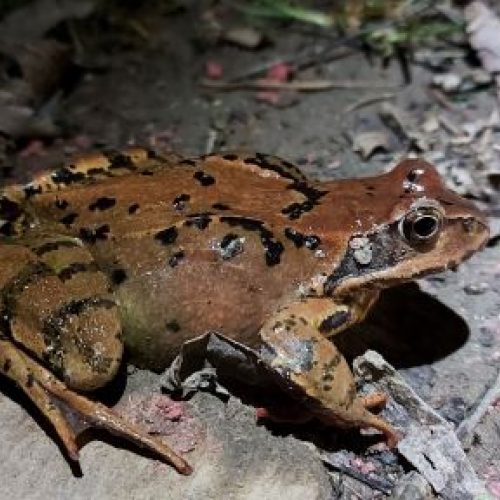News
Local awareness event for the protection of amphibians in the Mura Biosphere Reserve
lifelineMDD
Institute of the Republic of Slovenia for Nature Conservation (IRSNC) with its activities within the lifelineMDD - participates in the protection of the amphibians against mass run-ups (black spots) in the Mura Biosphere Reserve.
On two road sections near the Mura River at Gornja Radgona, in the village of Lutverci and Podgrad, on February 26, IRSNC employees of regional unit Maribor together with local initiators placed 2 x 300 m temporary fences to reduce traffic impacts on amphibians. In the appropriate days in March, a group of local nature lovers, mostly voluntarily and partly with the help of the lifelineMDD project team, will support the protective purpose of the placed fence by carrying amphibians across the road to their breeding sites. In approximately one month we have saved over 2.250 amphibians of four different species.
Amphibians are considered one of the most endangered animal groups today, especially because of habitat loss. Mura Biosphere Reserve is an important area of preserved wetlands, where amphibians find their natural habitat. Amphibians migrate along established paths between breeding sites and terrestrial habitats, which are often intersected by roads, so there are mass run-ups during migrations. They move between them throughout the year, and the run-ups are most noticeable during the spring migration when many species set out on their way to the breeding sites almost simultaneously.
The implementation of spring voluntary amphibian rescue campaigns and the installation of temporary road fences is an effective measure to reduce amphibian mortality.
Did you know that 15 species of frogs and other amphibians live in the Mura Biosphere Reserve?
In recent years 7 out of 15 species of protected amphibians have been observed on these two sections: common toads (Bufo bufo), common frog (Rana temporaria), agile frog (Rana dalmatina), European tree frog (Hyla arborea), green frog (Pelophylax kl. Esculentus) and Italian crested newt (Triturus carnifex) and smooth newt (Triturus vulgaris).
Photo provided by IRSNC.
